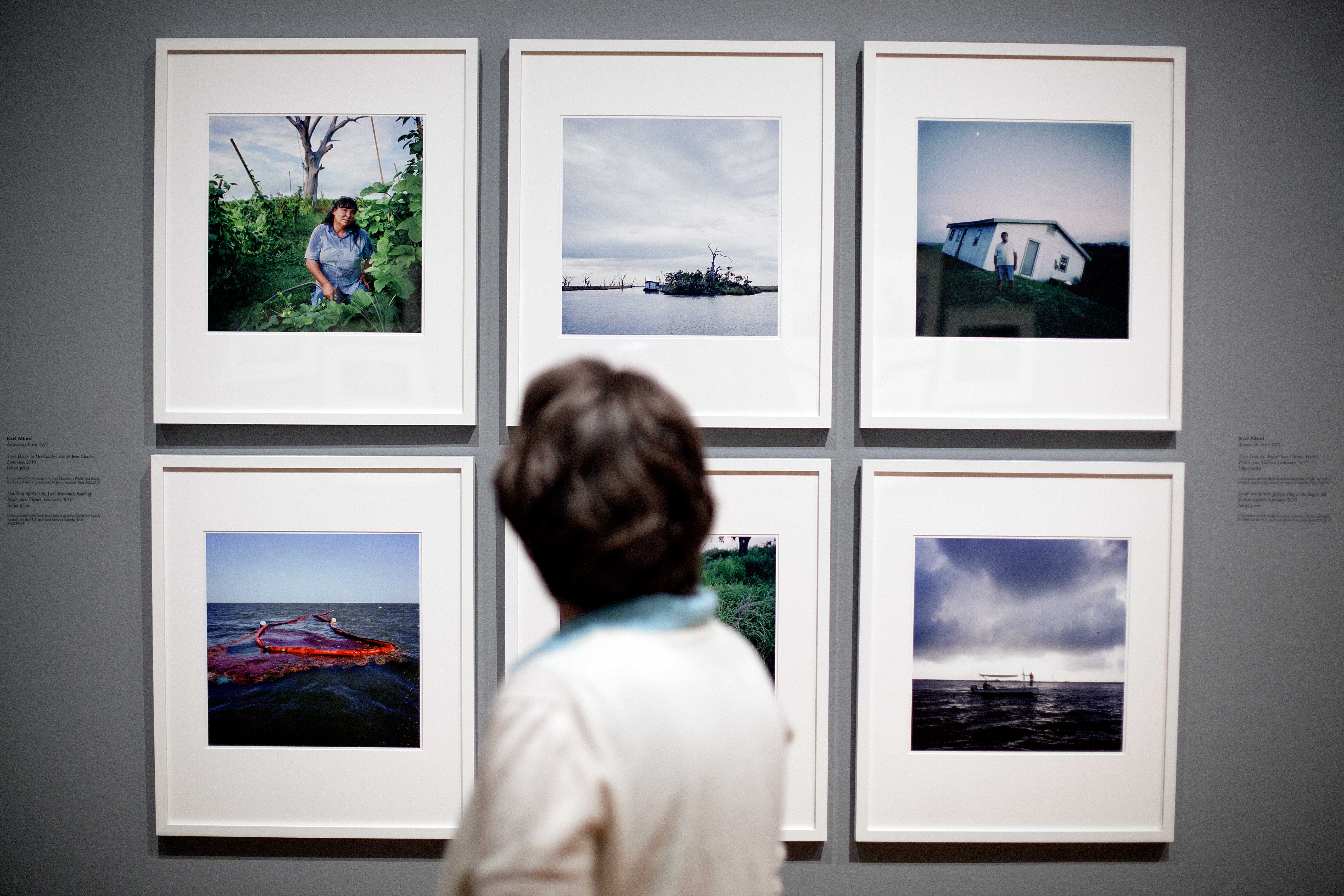Photographers explore the South in High Museum exhibition
Saturday, June 9, 2012
By KATE BRUMBACK
Associated Press
ATLANTA - Atlanta's High Museum of Art invited three photographers to present their views of the American South, and the results - including slices of urban life, rural portraits and eroding marshlands - will be on display starting this weekend.
The exhibition is part of the "Picturing the South" initiative established by the High in 1996. Since then the museum has commissioned a total of nine photographers - both established names and emerging artists - to shoot photos inspired by the region. The 76 prints will go on view Saturday alongside an exhibition from The Museum of Modern Art in New York called "Picturing New York." A related exhibition, "Revisiting the South: Richard Misrach's Cancer Alley," is also on view.
The three photographers chosen for the latest installment of "Picturing the South" are British documentary photographer and photojournalist Martin Parr, who focuses on the urban setting of Atlanta; Dallas-based documentary photographer and photojournalist Kael Alford, who depicts small communities in eroding marshlands of Louisiana; and Vermont native Shane Lavalette, who chose to explore the relationship between traditional Southern music and the contemporary landscape.
Parr's photos, with bright, saturated colors, capture his first visit to the South. It seems as if someone gave him a list of sights, institutions and major events in Atlanta and he ticked them off one by one. There are shots of Atlanta's zoo, the Centers for Disease Control and Prevention, the CNN Center and an exhibition opening at the High, as well as people tailgating before a Braves baseball game, participating in the Atlanta Pride Festival and enjoying the annual Dogwood Festival. He also looks at the region's food with a cross section of a rainbow layered cake and a plate heavy with barbecue.
"Ordinary people and ordinary things, like the local supermarket, inspire me with the same passion that leads other photographers to go to war zones," Parr said.
Alford shot foreign conflict zones for a decade before returning to the U.S. in the middle of the last decade. For her commission she chose to travel to a community of about 85 people living on an eroding strip of land in Louisiana's coastal marshes where she has family roots. The area has been damaged by gas and oil drilling and pounded by heavy storms. Alford sought to record the landscape and the people who cling to it.
As a journalist accustomed to moving from story to story and going where the action is, one of the toughest things was spending a significant amount of time in one place, she said.
"The personal connections I made with people are what kept me coming back," she said. "Because I spent so much time and focused on that one place, I really saw more of the complexities."
Her gallery in the exhibition includes portraits of people, eroding landscapes and a video of a shrimping trip.
Lavalette was born in Vermont and has always lived in the Northeast. His relationship with the South before beginning his project came mainly through the region's music and depiction in movies. He traveled to places with musical significance and met with gospel singers and other musicians but didn't want his project to be a strict telling of the history of Southern music or its current state.
"I like to stress that I was inspired by traditional Southern music rather than doing a documentary about it now," he said. "I'm really inspired by the landscape and how it in itself is musical and by the people and how they in themselves are musical."
His images include portraits of a juke joint owner on his 70th birthday and of a man who carves guitars from driftwood, a flock of birds flying up from a field and a video of a man singing gospel in front of lace curtains in his home.
"Picturing New York" is a collection of 154 photographs from MoMA, including works by well-known artists such as Diane Arbus, Henri Cartier-Bresson, Cindy Sherman, Alfred Stieglitz, Weegee and many others. The photographs capture scenes of life in New York, showing iconic landmarks and everyday moments alike. The exhibition is part of an ongoing, multi-exhibition collaboration between the High and MoMA that launched in 2009.
"The idea of this show is how photography and New York became modern together over the 20th century," said MoMA curator of photography Sarah Meister.
Finally, in "Revisiting the South: Richard Misrach's Cancer Alley," Misrach, one of the first photographers selected for "Picturing the South," shows 21 large-scale prints of photos he shot for his project, which explored the ecological degradation of a corridor of the Mississippi River between Baton Rouge and New Orleans that is home to many industrial plants and is sometimes referred to as Cancer Alley.
---
If You Go...
PICTURING THE SOUTH and PICTURING NEW YORK: Through Sept. 2 at the High Museum of Art; 1280 Peachtree St. NE, Atlanta; http://www.high.org, 404-733-4400. Open Tuesday, Wednesday, Friday, Saturday 10 a.m.-5 p.m., Thursday 10 a.m.-8 p.m., Sunday noon-5 p.m. Adults, $19.50; students with ID and seniors 65 and over, $16.50; children 6-17, $12; children 5 and under, free.
